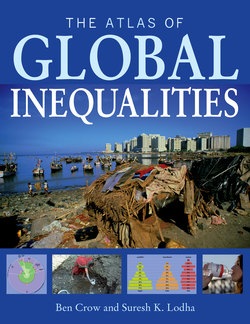Читать книгу The Atlas of Global Inequalities - Ben Crow - Страница 13
На сайте Литреса книга снята с продажи.
Оглавлениеdoes not include rural migrants working in towns and cities). The greatest discrepancy between rural and urban is found in the predominantly rural provinces. Critics of the HDI question the reliance on only three dimensions of human development to indicate human capabilities and well-being. They also assert that failure to include ecological and gender considerations renders HDI an inadequate measure of human development. It is clear, nonetheless, that the discussion begun in 1990 by publication of the first Human Development Report, has created space for a broader conception of human goals than was prevalent at that time. Problems with the national view The genre of the global statistical atlas, of which this is an example, rests on the growth of international agencies, with first the League of Nations and then the United Nations, and their need to publish compilations of national statistics that illustrate the scale of the issues they address. There are risks in the use of these statistics. Constant repetition of global maps can reinforce the simple idea that nations are the appropriate and exclusive unit for analyzing inequalities and social change. We have sought to mitigate this risk through the use of graphs, maps, and charts that illustrate differences along lines of gender, class or ethnicity, and through the occasional use of spatial distributions within one country. We leave the reader to remember the differences within her or his own nation, to be unsatisfied by national averages, and to question ideas that nations rather than people organize social change. Ben Crow Suresh Lodha Santa Cruz, August 2010
13
